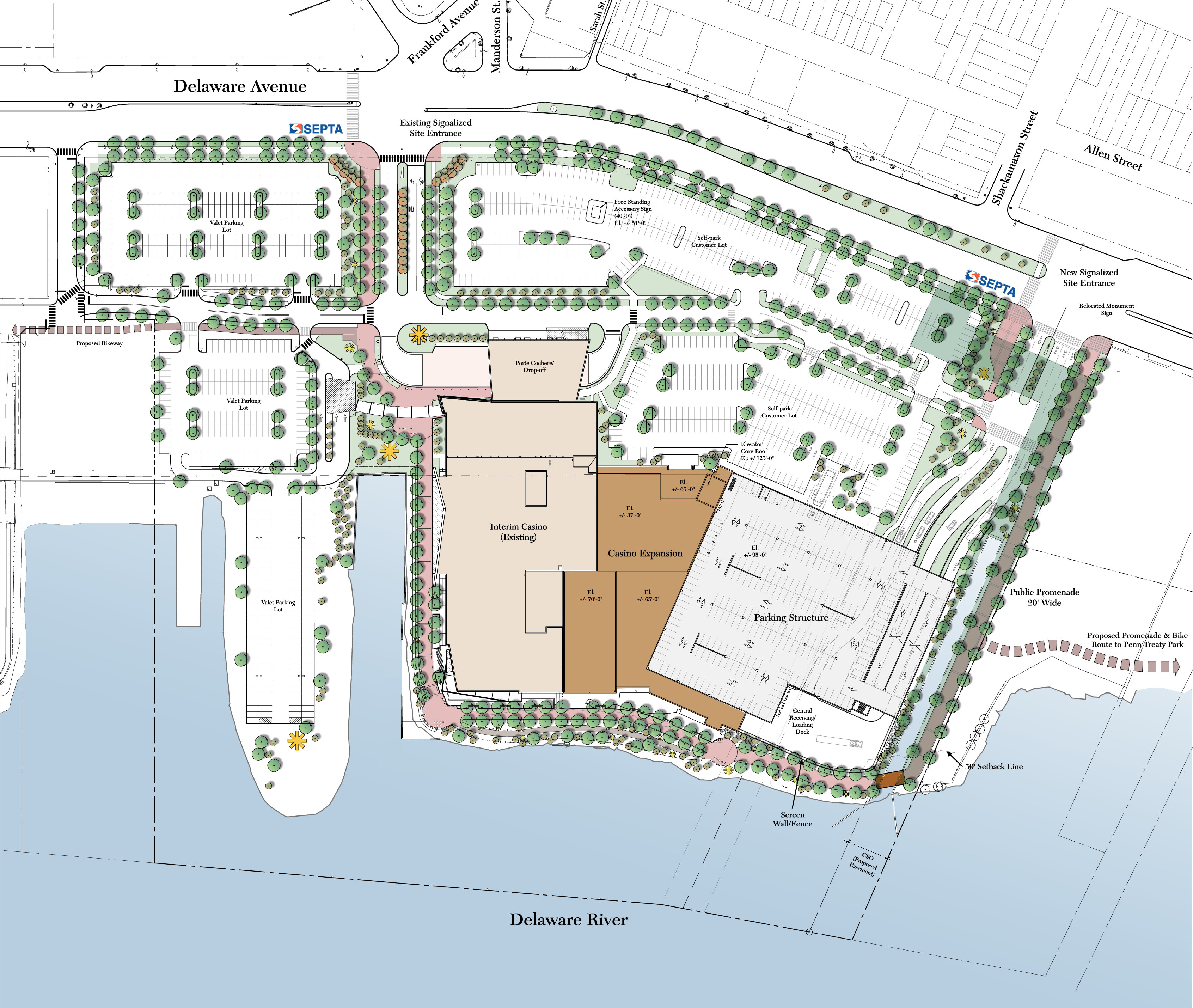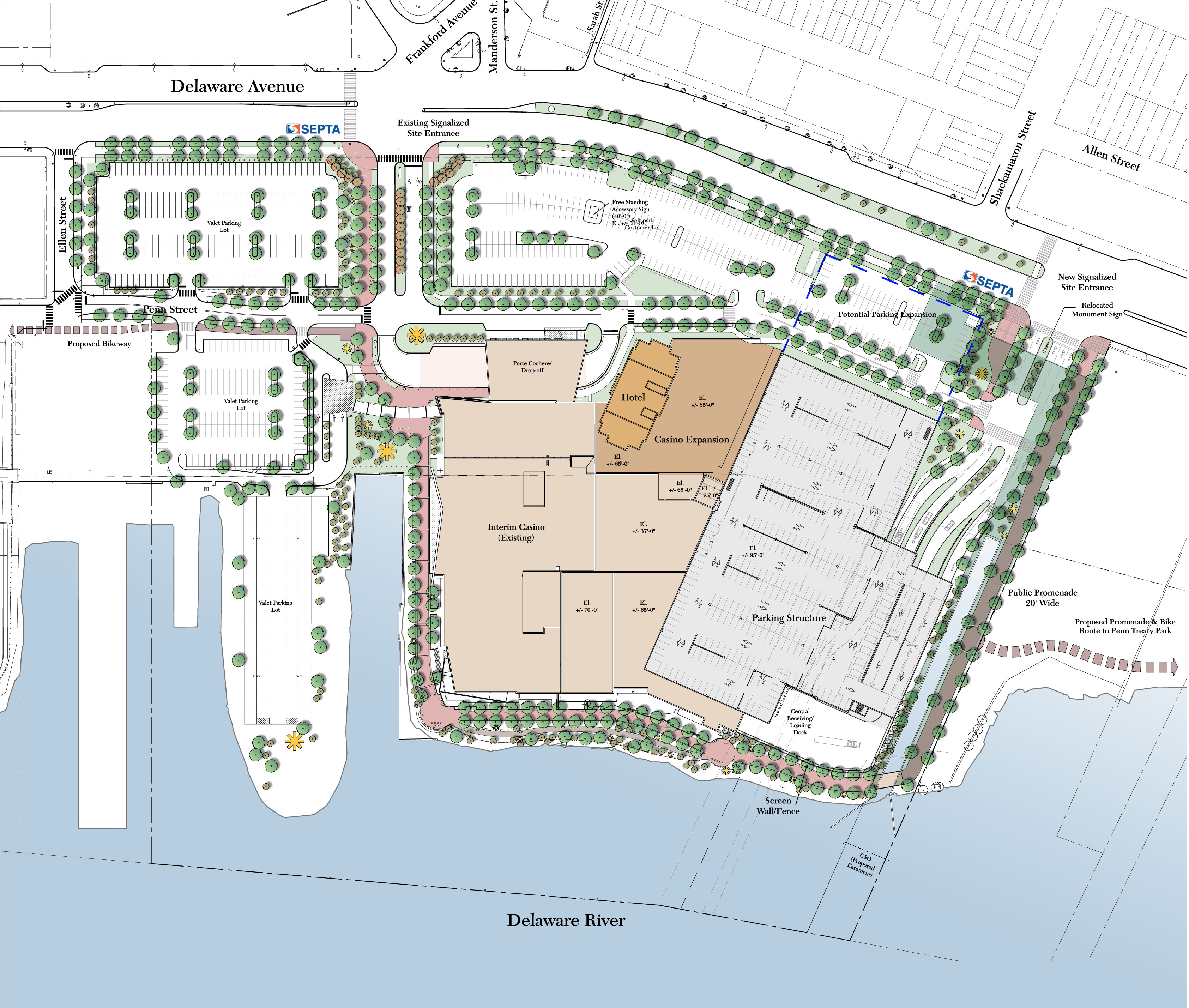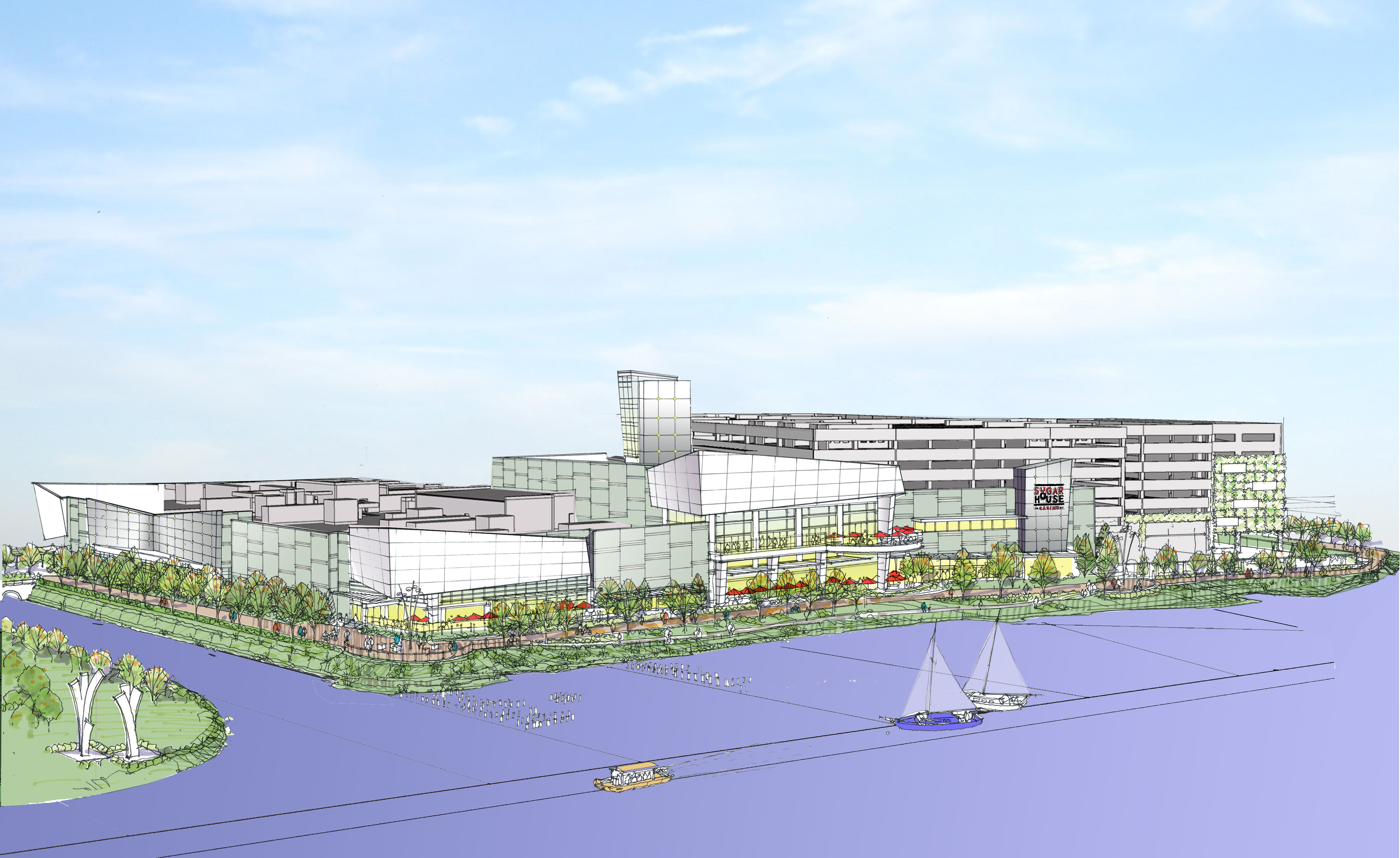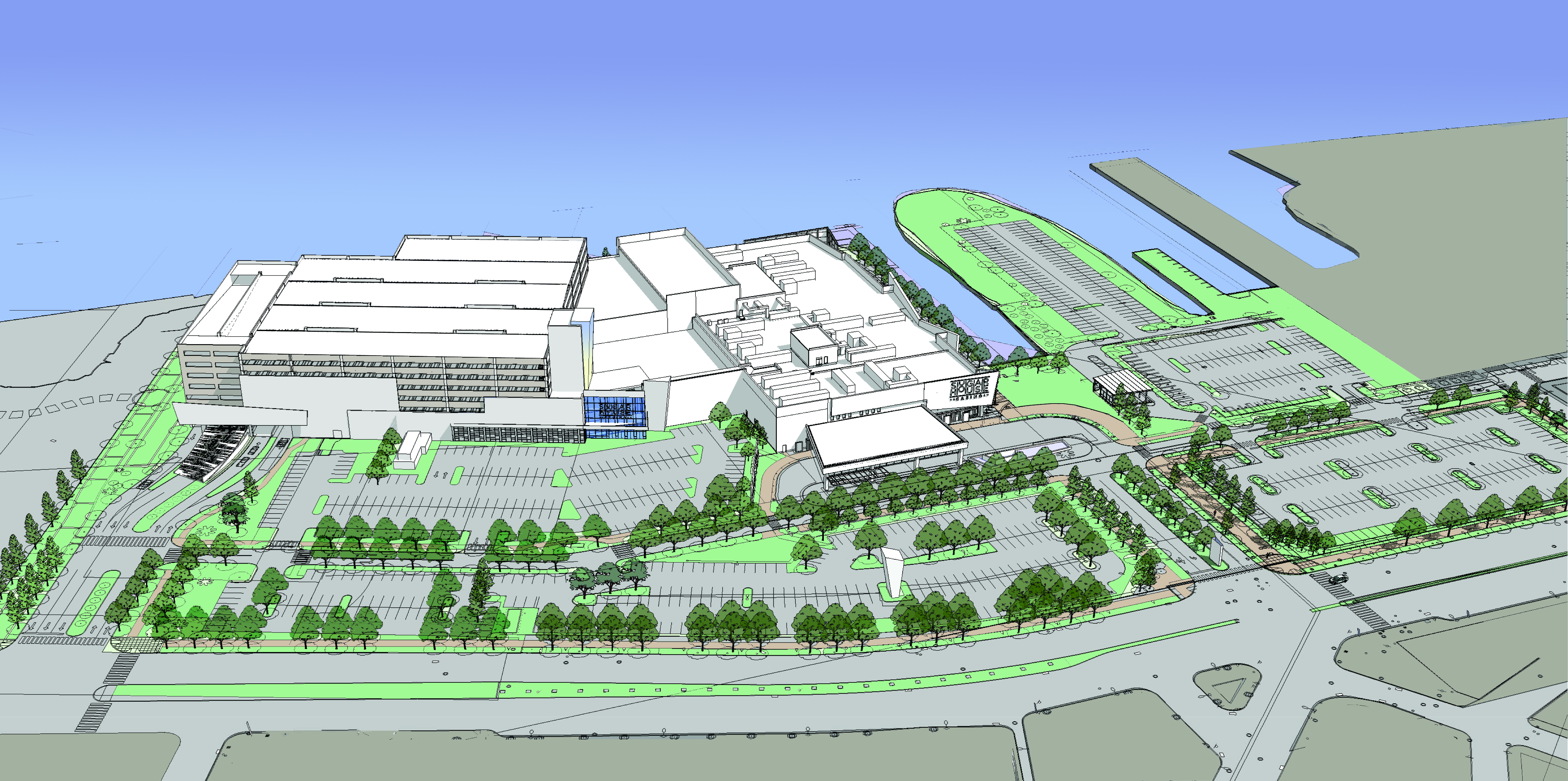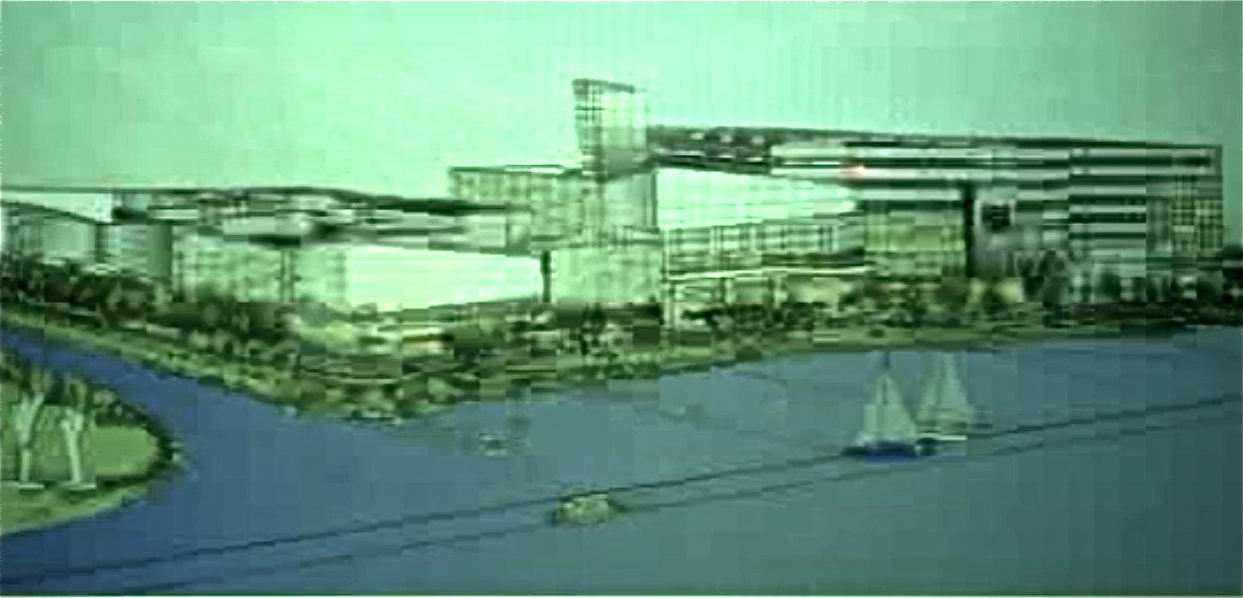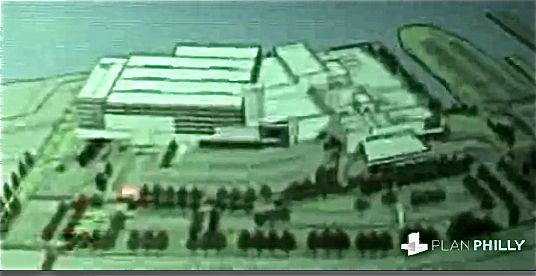UPDATED: SugarHouse talks expansion with planning commission
SugarHouse Casino representatives hope to: build a parking garage 40 feet shorter than what was originally approved for their next phase of development, retain the option of building outward instead of upward if there is the need for more parking in the future, and keeping plenty of surface parking right now.
Deputy Mayor Alan Greenberger told the Philadelphia City Planning Commission, of which he is chair, that the administration thinks the longer retention of more surface lot space is a good trade for reducing the garage from 10 stories atop a deck of expanded casino space to a ground floor plus six stories of auto storage.
The decreased height would create “a lower impact on the skyline,” said SugarHouse architect Ian Cope.
But Tuesday’s session was for information only. And Commissioner Nancy Rogo-Trainer advised casino officials to bring proof that the trade would be worth it when they come back for a vote.
She said it was not a “given,” that a shorter garage with the continuation of most of the site’s current surface parking would have a smaller impact than a taller, narrow garage would. When the commission voted for the current plan, it was assured that most of the surface parking would “go away,” she said. “I’m a little uncomforatble to that change,” she said. “Maybe I can come around to it, but that is not what we approved.”
The plans the commission has already approved called for all but 10 percent of the 100,000-square-foot parking lot to disappear when the garage is built.
The current plans also require SugarHouse to build the 3,200 space garage in one phase. Under this proposal, it could be built in several phases, said project architect Cope. SugarHouse wants to begin with 1,500 spaces.
The garage could later grow to about 3,000 spaces, but would not get taller, Cope said. It would stretch out toward Delaware Avenue. Because it would have no sloping floors, the garage would be “more customer friendly,” he said.
The amended plan gives the casino more flexibility – it doesn’t need that much parking garage at once, Cope said. When asked about funding after the meeting, Cope and SugarHouse project manager Terry McKenna referred questions to the project owner.
“This expansion brings the total investment in Philadelphia’s first and only casino to more than $500 million,” said SugarHouse spokesman Mike Gross in an email. When asked if that sum was currently on hand or if financing was still in the works, Gross said the information was not available.
In addition to the planning commission’s approval for this amended plan, SugarHouse would also need the support of City Council, the Pennsylvania Gaming Control Board and the Army Corp of Engineers.
The garage – which would include additional slots and table games on the ground floor – would be built on 19 acres north of the current site at 1707-1719 N. Delaware Avenue. SugarHouse has recently acquired that property. But casinos can only operate in Philadelphia on property zoned Commercial Entertainment District, and so City Council would need to enlarge the SugarHouse CED to include this land.
Right now, a combined sewer overflow is in the way. SugarHouse hopes to get Army Corps of Engineers and state Department of Environmental Protection approval to relocate the sewer elsewhere on the property.
Should the relocation be denied, Cope said the revamped project cannot proceed as designed.This permit application has not been submitted yet, he said.
In addition to the parking changes, the amended plan for the next phase of development also includes adding a partial second story to the front of the existing casino, Cope said. It would contain meeting rooms and possibly a restaurant.
The existing waterfront promenade, which Cope said is nearly 2,000 feet long and is “by far the largest public promenade of any development in the city” would be expanded through the parcel where the garage would sit, north of the current casino building. Greenberger said this fits nicely with the city’s plan to extend the trail even further north through two parcels that stand between the casino property and Penn Treaty Park.
The Delaware River Waterfront Corporation, a quasi-city agency that manages Philadelphia’s waterfront property and the plan to revitalize the Central Delaware riverfront, is in easement talks with the owner of one of the parcels, who has already fenced off his property west of the river with enough space between fence and river for the trail, said Greenberger, a DRWC board member. The other property is in foreclosure, and talks are ongoing with the bank, he said.
Because of all the approvals that must be gathered, Cope said there was no set start date for construction, but noted his firm has been asked to “have our drawings for summer 2012.” Once construction starts, the next phase should take 15 or 16 months, he said.
Cope described the preliminary new plan as “substantially similar” to the current approved plan, “but with a few improvements.”
He also showed images and discussed future phases of the project, including a hotel tower adjacent to the porte-cochere and ground-floor retail and “presumably residential” development along Delaware Avenue. That development would be slated for the future, dependent on market conditions.
The hotel would be less than 300 feet tall, respecting the current height limit, Cope said. It would have a green roof.
“We hope that we’ve at least begun to convince you that this is an improved plan,” Cope said, promising more detail in about two months. Cope said the expansion would add about 600 construction jobs and 500 permanent jobs.
SugarHouse has amended its plan in the past. In 2009, the casino and the mayor announced design changes that the gaming company and the city worked on together. The city had recently stopped trying to convince SugarHouse to move off the waterfront, and asked for additional public access, a reduction in the footprint of the buildings created by placing part of the gaming floor beneath a parking garage, and other changes. City officials believed the changes would make the casino a better fit with the long-range plan for the Central Delaware Waterfront, which has since coalesced into the Central Delaware Waterfront Master Plan. A month later, the gaming board approved the changes.
The casino opened about a year ago, and employs about 1,000 people, Cope said. Before it opened, there were fights and protests – legal, legislative and in the streets – to keep that from happening. While some community members eagerly anticipated the jobs, financial contributions to a community fund, and nightlife the casino would bring, others said it would bring problems with crime, addiction and traffic. Some just found the waterfront location inappropriate for a building they considered too big and too boxy.
Cope discussed the architectural steps the builder took to break up the building’s physical mass, including the use of several building materials, from metal to decorative walls of plants. He noted the lack of neon, and touted the riverfront dining area.
There are “few if any complaints about nefarious activity, traffic congestion or parking,” he said. “I think it’s fair to say the impacts on the neighborhood have been more innocuous and benign than many thought might occur.”
Some critics of the design – and the gambling industry – remain.
One group, Casino-Free Philadelphia, issued a report Tuesday saying the social costs of the casino far outweigh any benefits. Read the report .
“The real costs of SugarHouse fall under the radar and fall most heavily on those suffering from Pathological and Problem Gambling and on their families,” said Dan Hajdo, board member of Casino-Free Philadelphia. “Those costs, which are disproportionately experienced by minorities and low-income households, can’t be added up easily. And they can’t be justified at all,” said Hajdo.
Philadelphia resident and attorney Paul Boni, who is a board member of the nationwide group Stop Predatory Gambling, urged the PCPC to say no to the proposal, or, at least, to require that any new parking garage be valet-only. The parking garage makes coming to the casino more convenient, he said. “The more convenient you make the land use, the higher the rates of addiction,” he said.
Fishtown Action co-founder Maggie O’Brien, who has always supported the casino opening in her neighborhood, said her biggest concern about the parking garage is that it be big enough to accommodate all those who want to park. But she said it “probably does make sense” to build a shorter one. Under the current plan, the parking garage would sort of loom over the casino itself, she said.
O’Brien said she’s witnessed no negative impacts in her neighborhood from traffic, noise or crime. She likes how lit up the area is. “It feels much safer now with people around,” she said.
There are gambling addicts at SugarHouse, she said, but they were addicted before the casino opened, and if it had not, they would be gambling elsewhere. “You can’t shut down all the bars in the city because some people are addicted to alcohol,” she said.
Planning Commission Executive Director Gary Jastrzab had earlier in the meeting talked about a program where planners and communities can conduct health assessments of different aspects of their neighborhoods and use the results to guide planning decisions. Boni asked that a health assessment be done before any approvals were given to the proposed changes.
Commission Vice-Chair Joe Syrnick asked if the public had been informed about these prospective changes. Greenberger said that “several key members of civic associations were given a heads up that this was coming” and that there would be meetings with them in coming weeks.
O’Brien said that SugarHouse officials will be at FACT’s Oct. 3 meeting, 7 p.m., at the Holy Name Church Hall, 701 Gaul Street. The meeting is open to all, she said.
PCPC monthly reports
Contact the reporter at kgates@planphilly.com
WHYY is your source for fact-based, in-depth journalism and information. As a nonprofit organization, we rely on financial support from readers like you. Please give today.



